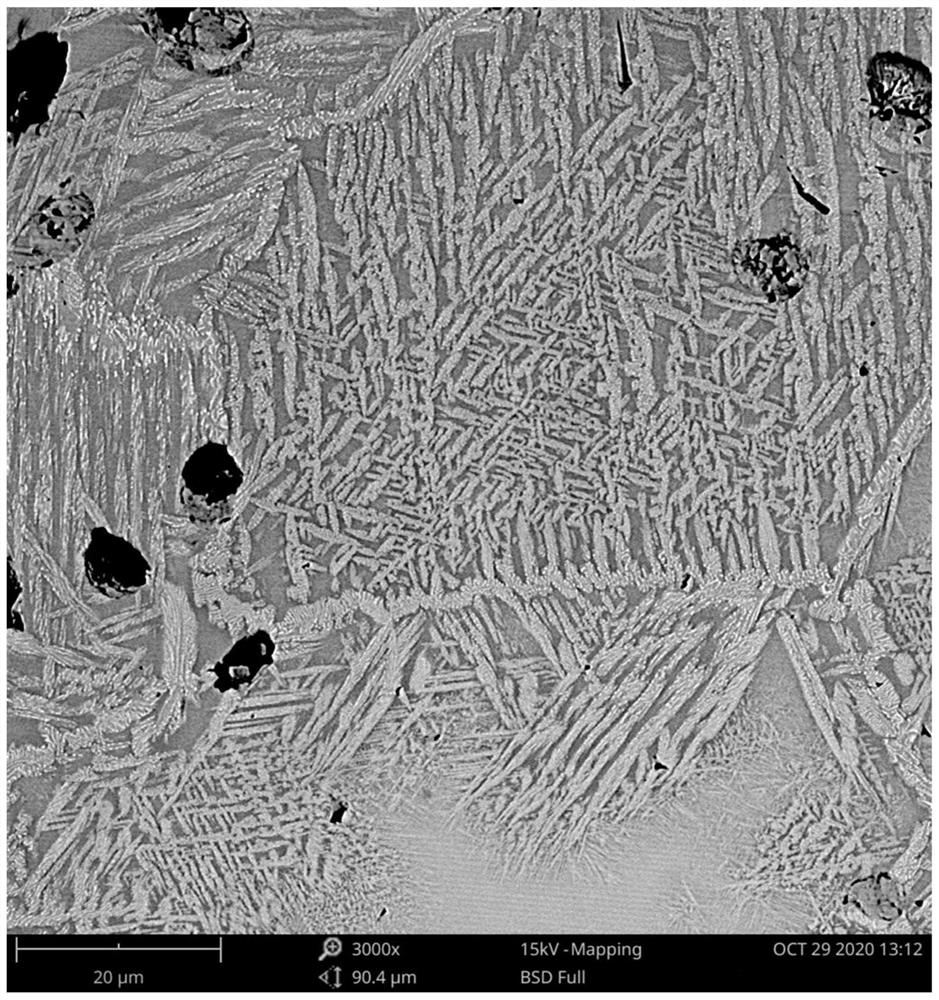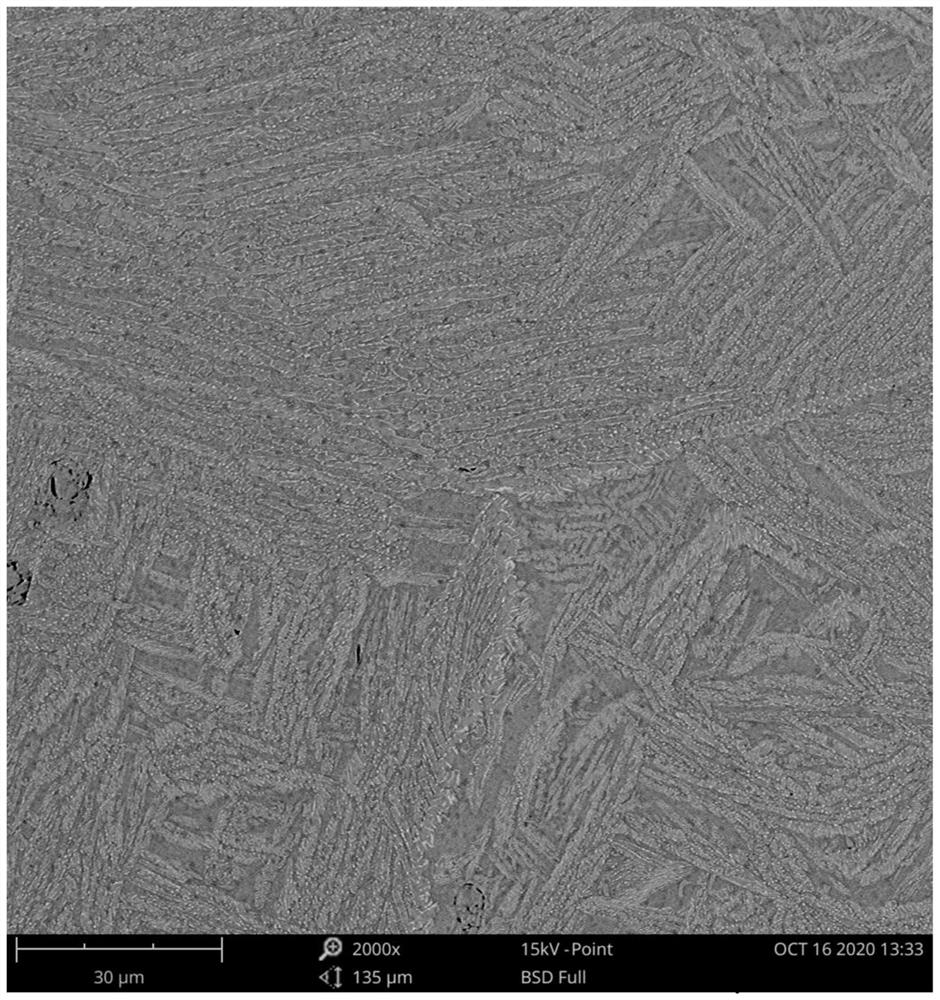Powder metallurgy refractory multi-principal-element high-entropy alloy and preparation method thereof
A high-entropy alloy and powder metallurgy technology, which is applied in the field of powder metallurgy refractory multi-principal high-entropy alloy and its preparation, can solve the problem of restricting the application and promotion of refractory multi-principal high-entropy alloy materials, and refractory multi-principal high-entropy alloys. Difficulty in large-scale mass production of alloys, high cost and other issues, to achieve the effect of easy safety risk control, fine microstructure, and conducive to diffusion
- Summary
- Abstract
- Description
- Claims
- Application Information
AI Technical Summary
Problems solved by technology
Method used
Image
Examples
preparation example Construction
[0053] A method for preparing a powder metallurgy refractory multi-principal element high-entropy alloy, specifically comprising the following steps:
[0054] Step S1: pass the refractory metal element through a 300-mesh sieve; the powder is mixed in a multi-component powder mixing method to obtain a mixture;
[0055] The compound is at least four elements of Ti, Zr, Hf, V, Nb, Ta, Cr, Mo, W;
[0056] The atomic percentage of each element in the mixture is 5%-35%; the total percentage is 100%;
[0057] Step S2: pressing and forming to obtain a compact;
[0058] Step S3: Vacuum high-temperature solid phase sintering to obtain a sintered block.
[0059] The present invention adopts multi-element powder mixing mode to process raw material powder.
[0060] This method uses high-purity elemental powders for mixing. The difference from high-energy ball milling mechanical alloying is that this method only mixes multi-element powders without grinding. It has the following advantage...
Embodiment
[0093]A refractory multi-principal high-entropy alloy containing Ti, Zr, Hf and Ta is taken as an example, wherein the atomic percentages of Ti, Zr, Hf and Ta are 28.33%, 28.33%, 28.33% and 15.01% respectively. According to the data, the melting point T of the alloy m About 1850°C, from the sintering temperature T s = α·T m Calculated, its sintering temperature T s The range is 1387.5°C-1585.7°C. In order to facilitate the setting of sintering process parameters, 1400°C and 1500°C within this range are taken as the sintering temperature for the test. The test set the sintering process parameters composed of different sintering temperature and holding time, respectively 1500°C×60 minutes, 1500°C×180 minutes, 1500°C×300 minutes, 1500°C×420 minutes, 1400°C×300 minutes, 1300°C × 300 minutes, 1800°C × 300 minutes.
[0094] 1. Preparation
[0095] Step S1: multi-element powder mixing;
[0096] Commercially available Ti powder, Zr powder, Hf powder and Ta powder with purity ≥ 9...
PUM
| Property | Measurement | Unit |
|---|---|---|
| melting point | aaaaa | aaaaa |
| density | aaaaa | aaaaa |
| compressive strength | aaaaa | aaaaa |
Abstract
Description
Claims
Application Information
 Login to View More
Login to View More - R&D
- Intellectual Property
- Life Sciences
- Materials
- Tech Scout
- Unparalleled Data Quality
- Higher Quality Content
- 60% Fewer Hallucinations
Browse by: Latest US Patents, China's latest patents, Technical Efficacy Thesaurus, Application Domain, Technology Topic, Popular Technical Reports.
© 2025 PatSnap. All rights reserved.Legal|Privacy policy|Modern Slavery Act Transparency Statement|Sitemap|About US| Contact US: help@patsnap.com



